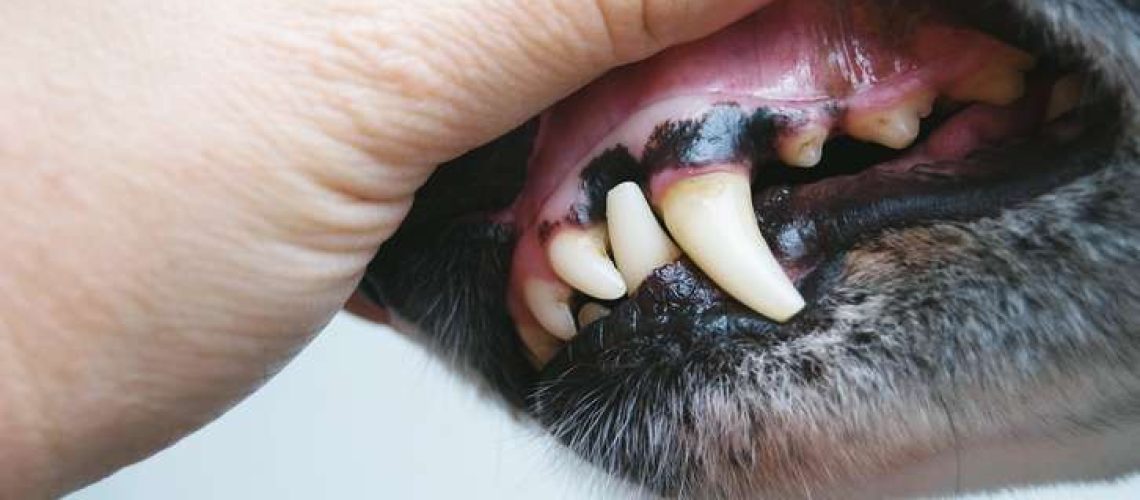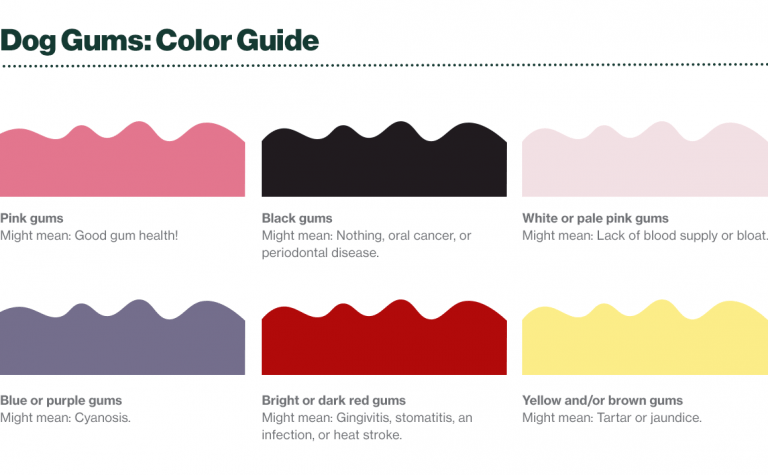Key Takeaways:
- Pale gums in dogs can be a sign of anemia, which is a decrease in the number of red blood cells or hemoglobin.
- Other possible causes of pale gums in dogs include shock, internal bleeding, and certain diseases such as kidney or liver disease.
- If your dog has pale gums, it is important to seek veterinary attention promptly as it may indicate a serious underlying condition.
- Checking your dog's gum color regularly can help you detect any changes early and seek appropriate medical care if needed.
- In addition to pale gums, other signs of anemia in dogs may include weakness, lethargy, loss of appetite, and increased heart rate.
Are you a dog owner who wants to ensure the well-being of your furry friend? If so, understanding the signs and symptoms of pale gums in dogs is essential. Pale gums can be an indication of various health issues that may require immediate attention. By diving into this topic, you will not only gain valuable knowledge about your dog's health but also empower yourself to take prompt action when needed. So, let's explore the world of pale gums in dogs and discover how it can help us become more responsible and caring pet owners. Remember, knowledge is power when it comes to safeguarding our beloved companions.
Understanding Pale Gums in Dogs: Why It's Important to Pay Attention
Pale gums in dogs can be an indication of underlying health issues. Gums that are normally pink and moist may turn pale or even white, which could be a sign of anemia, shock, or other serious conditions. As a responsible pet owner, it is crucial to pay attention to your dog's gum color as it can provide valuable information about their overall health.
When the gums appear pale, it means there is a decrease in blood flow or oxygen levels in the body. This can be caused by various factors such as internal bleeding, blood disorders, heart problems, or even dehydration. By regularly checking your dog's gum color, you can catch potential health problems early on and seek appropriate veterinary care.
Signs to Look Out For:
- Gums that are noticeably lighter than their usual pink color
- Gums that appear white or grayish instead of pink
- Lethargy or weakness
- Rapid breathing or panting
- Collapse or fainting
Why Gum Color Matters:
The gums serve as a good indicator of how well oxygenated your dog's blood is. Oxygen-rich blood gives the gums their healthy pink color. When the gums become pale, it suggests that there may be an issue with oxygen delivery to the tissues.
If left untreated, conditions causing pale gums can lead to severe complications and even be life-threatening for your furry friend. Therefore, being aware of changes in gum color and taking prompt action is essential for maintaining your dog's well-being.
Identifying Pale Gums in Dogs: Signs to Look Out For
Identifying pale gums in dogs is relatively simple and can be done by examining the color of their gums. Normally, a dog's gums should appear pink and moist. However, if you notice any significant changes in gum color, it could be an indication of an underlying health problem.
When checking your dog's gums, lift their lip gently to expose the gum line. Look for the following signs:
Signs to Look Out For:
- Pale or white gums instead of the usual pink color
- Gums that feel dry or sticky to the touch
- Gums that take longer than usual to return to their normal pink color after being pressed
- Yellowish tint to the gums, which may indicate jaundice
If you notice any of these signs, it is important not to ignore them. Pale gums can be a symptom of various health conditions and require further investigation by a veterinarian.
Common Causes of Pale Gums in Dogs and the Importance of Their Health
Pale gums in dogs can have several causes, ranging from mild issues to more serious medical conditions. Understanding these causes is crucial for ensuring your dog's well-being.
Anemia:
Anemia occurs when there is a decrease in red blood cells or hemoglobin levels in the body. This can lead to pale gums as there is less oxygen being carried through the bloodstream. Anemia can be caused by factors such as blood loss, nutritional deficiencies, or underlying diseases.
Shock:
In cases of severe trauma or internal bleeding, dogs may go into shock. Shock is a life-threatening condition where there is inadequate blood flow throughout the body. Pale gums can be a sign of shock, and immediate veterinary attention is necessary.
Dehydration:
When dogs are dehydrated, their gums may appear pale or dry. Dehydration can occur due to illness, excessive heat, or lack of access to water. It is important to ensure your dog stays hydrated to maintain healthy gum color.
Other Causes:
Pale gums can also be caused by various other factors such as heart problems, blood disorders, infections, or certain medications. Identifying the underlying cause is crucial for appropriate treatment and management of your dog's condition.
Immediate Steps to Take If You Notice Your Dog Has Pale Gums
If you notice that your dog has pale gums, it is important to take immediate action to ensure their well-being.
Step 1: Assess the Situation
Check for any other accompanying symptoms such as weakness, rapid breathing, or collapse. This will help you determine the severity of the situation and whether emergency veterinary care is required.
Step 2: Contact Your Veterinarian
Contact your veterinarian and explain the situation. They will provide guidance on whether your dog needs immediate medical attention or if home remedies can be tried first.
Step 3: Monitor Vital Signs
In the meantime, monitor your dog's vital signs such as their breathing rate and heart rate. Keep them calm and comfortable while waiting for further instructions from your veterinarian.
Note:
If your dog's condition deteriorates rapidly or they show signs of severe distress (e.g., difficulty breathing), do not hesitate to seek emergency veterinary care immediately.
Temporary Home Remedies for Improving a Dog's Pale Gums
While it is important to seek veterinary advice for pale gums in dogs, there are a few temporary home remedies you can try to improve the situation before getting professional help.
Increase Hydration:
If dehydration is suspected, encourage your dog to drink water. Offer fresh, clean water and consider adding low-sodium chicken broth or electrolyte solutions formulated for dogs to entice them to drink more.
Check for Bleeding:
If you suspect that blood loss may be causing the pale gums, check your dog's body for any signs of bleeding. Apply gentle pressure with a clean cloth or bandage if bleeding is present and contact your veterinarian immediately.
Assess Diet:
In some cases, nutritional deficiencies can contribute to pale gums. Ensure that your dog is receiving a balanced diet appropriate for their age and breed. If necessary, consult with your veterinarian about dietary changes or supplements.
When to Seek Veterinary Assistance for Your Dog's Pale Gums and Possible Treatments
Seeking veterinary assistance is crucial when dealing with pale gums in dogs as it can indicate underlying health problems that require proper diagnosis and treatment. Your veterinarian will perform a thorough examination to determine the cause of the paleness and recommend appropriate treatments.
Possible Treatments:
- Blood tests: To assess red blood cell count, hemoglobin levels, and check for any underlying diseases or disorders.
- Fluid therapy: If dehydration or shock is suspected, intravenous fluids may be administered to restore hydration and improve blood flow.
- Dietary changes or supplements: In cases of anemia or nutritional deficiencies, dietary adjustments or supplements may be recommended by your veterinarian.
- Medications: Depending on the underlying cause, medications such as antibiotics, anti-inflammatories, or other specific treatments may be prescribed.
It is important to follow your veterinarian's guidance and treatment plan to ensure the best possible outcome for your dog's health. Regular check-ups and monitoring of gum color can help detect any changes early on and prevent potential complications.
In conclusion, pale gums in dogs can be a sign of health problems and should not be ignored. If you notice your dog's gums are pale, it is important to consult a veterinarian for proper diagnosis and treatment.
Should I be concerned if my dog's gums are pale?
If your dog's gums are pale pink or white, it is important to take them to a vet for evaluation. This is especially crucial if they experience collapse, weakness, lethargy, a swollen belly, abnormal breathing, or vomiting. It is recommended to seek veterinary assistance as soon as possible.
Does dehydration cause pale gums in dogs?
Pale gums can indicate various issues, such as bleeding, heart disease, or extreme dehydration.
What do anemic dog gums look like?
The main and commonly noticeable clinical indication of anemia is a change in the color of the gums, which can become pale pink or even white. Dogs with anemia also exhibit decreased energy and stamina, leading to a lack of enthusiasm and becoming easily fatigued.
Why are my dogs gums pale but fine?
Having white gums can indicate various health issues such as severe anaemia, blood loss, shock, kidney disease, pain, or anxiety. Pale pink gums may be a sign of anaemia, low blood pressure, or shock. Yellow gums can indicate problems with the liver or damage to red blood cells.
Do dogs with kidney failure have pale gums?
Signs of kidney failure in dogs include weight loss, nausea, vomiting, and pale gums.
How can I help my dog with pale gums?
If a dog has pale gums, it could indicate a medical emergency and it is important to take them to a veterinarian immediately. Normally, a dog's gums should be pink and moist. Pale gums can be caused by various conditions such as internal bleeding, anemia, cancer, or kidney disease. It is recommended for pet owners to regularly check their dog's gums a few times each month.

















